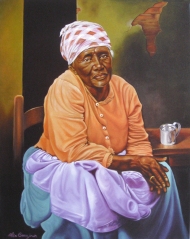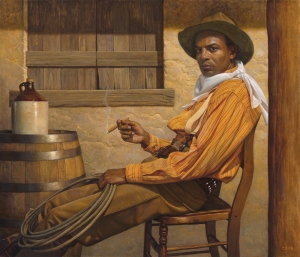
AN ONGOING SERIES THAT LOOKS AT ART AND VARIOUS ART STYLES
How often have you been at an art show, an art fair, a gallery, a museum, or even a friend’s house looking at artwork and enjoying the experience but wishing that you had the tools to better understand or talk about the art you were viewing? No matter what our art IQ is, we have all felt at one time or another that we wish we had a little better understanding of the fine points of art.
In this ongoing series we will take a (somewhat simplified) walk through our ‘online gallery’, looking at different art styles while connecting some of our more popular artists with the stylistic category into which they fall. We may pause a little longer at some spots, or even revisit others to gain a little more insight into some areas of particular importance or interest. Join me on this tour!
Art Styles
There is a wide variety of art styles, sub-sets of styles, combinations of styles, and ‘updates’ of styles. Categories are not always clear-cut and many artists do not necessarily fall into one single category.
Kevin A. Williams’ Take 5, for example, has strong elements of Impressionism, while his newest work, For Every Mountain (below) embraces Realism.

For simplicity sake, and to get a better understanding of the basics, we will focus on the most common styles that have influenced today’s artists and, in particular, contemporary Black artists.
Art styles describe the way artwork looks. Style is basically the manner in which the artist portrays his or her subject matter and how the artist expresses his or her vision. An artist typically combines various elements in creating a work of art. Some of these essential elements are form, color, and composition, to name a few. The way in which an artist uses and manipulate these elements will determine the style of art that characterize the work. We also have to consider the techniques that the artist uses.
Each artist has his or her own personal art style, which is developed over his or her career. An artist’s style can change and adapt as the artist grows, both as an artist and as a person. It is not uncommon to see younger artists imitating or copying the styles of more established artists that they admire. Ultimately, though, the successful artist will be the artist who focuses on developing his or her own style, and find his or her own unique mode of expression, or ‘voice’. No matter how individual or unique that style becomes, usually we can find elements in it that will place it within an established category.
We will begin by listing some of the popular art styles, including those that we will discuss in this series. Many of these styles are part of historical “movements” in art that have been revived, or have inspired new “movements” and now come with the prefix “neo” affixed to them (eg. neo-expressionism). Some of the major art styles are:
Abstract Art
Realism
Impressionism
Expressionism
Cubism
Pop Art
Surrealism
Mannerism
Photo Realism
Primitivism
Folk Art
To begin our series we will look at two styles that have been widely adapted by some of the most popular artists in the print market: Realism and Mannerism.
Realism
Virtually all visual art was completely representational until the mid to late 19th century. In fact, most great painters’ ambition was to create such perfect representation of reality that any trace of the their own work was invisible. Realism is the art style most people regard as “real art”, where the subject of the painting looks very much like it appears in real life. From a little distance everything looks “real” but up close you’ll see it’s an illusion created by skillful use of paint, of color and tone. To paint in a realistic manner requires great skill and mastery of the technical aspect of painting. The artist uses perspective to create an illusion of reality, setting the composition and lighting to make the most of the subject.



My Work is Done by Alix Beaujour
Blessed and Highly Favored by Henry Lee Battle
Cotton by Kadir Nelson
Some artists who paint in this style are Henry Lee Battle, Kadir Nelson and Alix Beaujour.
A form of realism in which the artist tries to faithfully recreate a photographic image, or creates a painting that resembles a photograph in its realistic details, is referred to a photo realism (or photorealism). Thomas Blackshear is a well-known artist who often works in this style.
Texas Chillin’ by Thomas Blackshear
Mannerism
Mannerism is sometimes defined as the “stylish style” because of the deliberately affected exaggeration and bending of the rules of scale and perspective, rather than a more realistic depiction. Mannerists believe that for art to be interesting, the artist has to be inventive and add a touch of elegance and distortion. Added to those elements are elongated human figures, exaggerated poses, unusual effects of scale and lighting, vivid, dramatic colors, and sometimes irony and humor.
This visual style has found resonance with many African American artists who find it the perfect artistic language to capture the swag, style and substance of the urban Black experience. Urban Mannerism is the term often used to describe to the style of mannerist artists who depict an urban Black lifestyle.
Ernie Barnes is probably the most popular practitioner of this style of painting. Many artists of this generation have adopted the style to great acclaim and commercial success. The most noteworthy of them is Frank Morrison, who has often ‘mixed it up’ with cubism and expressionism, Bua and David Garibaldi.
Some examples of Mannerist style
Singing Sistahs by Ernie Barnes
High Aspirations by Ernie Barnes
Red by Frank Morrison
Among the other artists known for their mannerist style are Bua, David Garibaldi, Kadir Nelson, Maurice Evans and Doyle.
NEXT INSTALLMENT: Expressionism
Expressionism
Expressionism as a painting style is not easily defined, in part because it overlaps with other major ‘isms’ of the modernist period such as Cubism and Surrealism, among others.
Historically speaking, it was a movement that developed in the early twentieth-century mainly in Germany in reaction to the dehumanizing effect of industrialization and the growth of cities. One of the central features was its rejection of realism, and an emphasis on a subjective feeling over objective observation.
In artistic terms, Expressionism refers to a style in which the artist depicts not reality as we see it, but rather the subjective emotions and responses that the object or event arouse within a person. The artist will often use colors in a more extremely symbolic way and the images will often be exaggerated or distorted for psychological and emotional effect. It is a style of painting favored by artists who are interested in deep self-expression or psychological exploration of their subject.
One of the most iconic expressionist paintings in art history is “The Scream” by Edvard Munch which shows a figure with an agonized expression against a landscape with a tumultuous orange sky.
A major African American Expressionist painters is Jacob Lawrence who has been quoted as saying, “I would describe my work as expressionist. The expressionist point of view is stressing your own feelings about something. When the subject is strong, simplicity is the only way to treat it.”
Jacob Lawrence is known for a style that includes flattened, angular forms, contrasts of light and shadow that contribute to the dynamism of the images and create a sense of human or historical drama in his paintings and reveal the depth of the story.
Some of the prints on our website that we could classify as Expressionism are shown here:
- I See the Rhythm of Spirituals by Michele Wood
- Boy and Dog in a Johnnypump by Jean-Michel Basquiat
- The Lantern by Romare Bearden
- Entertainers – Two Man Band by John Holyfield
- Brothers by Ann Tanksley
- This is a Family Living in Harlem, 1943 by Jacob Lawrence















